
Journal of High Energy Astrophysics
Scope & Guideline
Illuminating the Universe: Where High Energy Meets Discovery
Introduction
Aims and Scopes
- High-Energy Astrophysics:
The journal emphasizes research related to high-energy processes in astrophysics, including cosmic rays, gamma-ray bursts, and other energetic astrophysical events. - Theoretical Models and Simulations:
A significant portion of the published work involves developing theoretical frameworks and computational simulations to explain complex astrophysical phenomena, such as black hole dynamics and cosmic evolution. - Observational Astronomy:
The journal features articles that report on observational campaigns and findings, employing various astronomical instruments to gather data on high-energy sources. - Cosmology and Dark Energy:
Research on cosmological models and the role of dark energy in the universe is a core area of focus, highlighting the relationship between astrophysical observations and cosmological theories. - Astroparticle Physics:
The journal covers interdisciplinary research at the intersection of astrophysics and particle physics, exploring the origins and implications of high-energy particles in the universe. - Gravitational Wave Astronomy:
As gravitational wave detection becomes more prevalent, the journal publishes studies that explore the implications of these observations for our understanding of astrophysical phenomena.
Trending and Emerging
- High-Energy Cosmic Rays and Astroparticle Physics:
Recent publications have increasingly explored the origins, acceleration mechanisms, and implications of ultra-high-energy cosmic rays, reflecting a growing interest in their role in the universe. - Multi-Messenger Astronomy:
The integration of observations across different messenger types—such as gravitational waves, neutrinos, and electromagnetic signals—has become a prominent theme, indicating a shift towards a more holistic understanding of astrophysical phenomena. - Dark Matter and Dark Energy Investigations:
Research into the nature of dark matter and dark energy, including their effects on cosmic structure formation and evolution, has gained momentum, driven by the need to reconcile observational anomalies with theoretical predictions. - Machine Learning and Data-Driven Approaches:
There has been an increasing application of machine learning techniques to analyze large datasets from telescopes and simulations, indicating a trend towards computational methods in astrophysics. - Gravitational Wave Astronomy:
With the advent of gravitational wave detection, studies focusing on the implications of these observations for understanding cosmic events, such as neutron star mergers and black hole collisions, have surged.
Declining or Waning
- Classical Stellar Evolution Models:
Research focused on traditional models of stellar evolution has become less frequent, with a shift towards more complex scenarios involving exotic physics such as dark matter interactions. - Low-Energy Astrophysical Phenomena:
Studies centered around low-energy astrophysical processes and sources are declining as the field increasingly prioritizes high-energy phenomena and their implications. - Static Cosmological Models:
There is a waning interest in static cosmological models that do not incorporate dynamic elements like dark energy or evolving cosmic structures, as newer models offer more predictive power. - Non-Relativistic Jet Models:
Interest in non-relativistic models of jet formation and dynamics has decreased, with a stronger emphasis on relativistic jets and their connections to high-energy emissions. - Traditional Gravitational Lens Studies:
While gravitational lensing is still a relevant topic, studies focusing solely on traditional lensing techniques without incorporating new physics or observational advancements are becoming less common.
Similar Journals
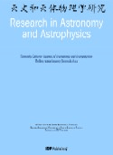
Research in Astronomy and Astrophysics
Unlocking the Secrets of the Universe Through Open Access.Research in Astronomy and Astrophysics, published by the National Astronomical Observatories under the Chinese Academy of Sciences, stands out as a pivotal platform for disseminating cutting-edge research in the fields of astronomy and astrophysics. With an ISSN of 1674-4527 and an E-ISSN of 2397-6209, this esteemed journal operates as an open access publication, ensuring that high-quality research is available to a broad audience without any financial barriers. As of 2023, it holds a commendable Q2 quartile ranking in both Astronomy and Astrophysics, as well as Space and Planetary Science, reflecting its importance and revered position among leading journals. Spanning from 2009 to 2024, it is geographically rooted in the United Kingdom but engages a global readership and author base, making significant contributions to the rapidly evolving discourse in astrophysical studies. Moreover, its rankings in Scopus underscore its relevance, ranking 43rd out of 90 in Astronomy and Astrophysics and 61st out of 104 in Space and Planetary Science, placing it firmly within the competitive landscape of scientific research. Research in Astronomy and Astrophysics is dedicated to fostering innovation and communication within the scientific community, offering researchers, professionals, and students alike a valuable resource for collaboration and knowledge advancement.

INTERNATIONAL JOURNAL OF MODERN PHYSICS A
Fostering collaboration in the realms of astrophysics and high energy physics.INTERNATIONAL JOURNAL OF MODERN PHYSICS A, published by WORLD SCIENTIFIC PUBL CO PTE LTD, stands as a pivotal platform in advancing the frontiers of research within the fields of Astronomy and Astrophysics, Atomic and Molecular Physics, and Nuclear and High Energy Physics. Established in 1989, this journal has systematically contributed to the scientific community, with a demonstrated impact as indicated by its Q2 category rankings across these critical disciplines in 2023. Researchers and professionals are encouraged to engage with its rigorous peer-reviewed content, fostering a deeper understanding of modern physics theories and experimental breakthroughs. Although the journal operates under a conventional access model, it remains a vital resource for those seeking to disseminate their findings and stay abreast of cutting-edge developments. With an emphasis on quality and breadth of research, the journal continues to attract submissions from leading physicists and scholars, enhancing its reputation as a key academic resource.

Universe
Connecting Ideas, Unlocking the Secrets of the Universe.Universe is a distinguished peer-reviewed journal published by MDPI, specializing in the dynamic fields of Physics and Astronomy. Established in 2015, this Open Access journal has rapidly gained recognition, achieving a prestigious Q1 quartile ranking in its category as of 2023. With its E-ISSN 2218-1997, the journal primarily serves the international scientific community, offering a platform for researchers to disseminate innovative ideas and findings. Based in Switzerland, Universe covers a wide range of topics within astronomy and astrophysics, ensuring that cutting-edge research is accessible to an ever-growing audience. Its commitment to open access principles since its inception allows for unrestricted dissemination of knowledge, fostering a collaborative environment essential for scientific advancement. By aligning its objectives with the promotion of high-quality research and interdisciplinary discourse, Universe stands as a vital resource for academics, professionals, and students aiming to contribute to and engage with the ever-evolving landscape of astronomical research.
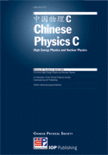
Chinese Physics C
Connecting Global Minds in Physics ExplorationChinese Physics C is a premier, peer-reviewed journal published by IOP Publishing Ltd, dedicated to advancing knowledge in the fields of Astronomy and Astrophysics, Instrumentation, and Nuclear and High Energy Physics. With an impressive impact factor reflecting its standing in the Q1 quartile across multiple categories, this journal serves as a vital resource for researchers, professionals, and students seeking to engage with cutting-edge developments and experimental findings. Since its inception in 2008, Chinese Physics C has fostered significant collaborations and discussions within the global physics community, enabling easy access to high-quality research through its open access options. Operating from the United Kingdom with a commitment to excellence, this journal not only showcases high-impact papers but also encourages innovative methodologies and interdisciplinary approaches, solidifying its role as an essential platform for dissemination and dialogue in the rapidly evolving landscape of physics.

EUROPEAN PHYSICAL JOURNAL C
Advancing the Frontiers of Physics and EngineeringEUROPEAN PHYSICAL JOURNAL C (EPJ C), published by SPRINGER, stands as a premier platform for innovative research in the domains of Physics and Engineering. With its Open Access policy established in 2014, EPJ C ensures that groundbreaking findings are readily available to the global scientific community, enhancing accessibility and collaboration. The journal, indexed in prestigious databases, boasts an impressive impact factor and ranks within the Q1 category for both Engineering and Physics and Astronomy, placing it among the top-tier journals in these fields. Celebrated for its rigorous peer-review process, EPJ C offers a wide-ranging scope encompassing various topics in particle physics, quantum field theory, and related interdisciplinary studies. Its consistent publication since 1991 has fostered a vibrant community of researchers dedicated to advancing knowledge and innovation in physics and engineering. Join the scholarly discussion and contribute to the cutting-edge research made possible through EPJ C's esteemed platform.

Galaxies
Pioneering research in the realm of stars and galaxies.Galaxies, published by MDPI, is a premier open-access journal dedicated to the vibrant field of Astronomy and Astrophysics. Established in 2013, with a strong commitment to making scientific research accessible, this journal has quickly garnered recognition, achieving a notable impact factor and ranking in the Q2 Quartile of its category as of 2023. With a Scopus ranking of #31 out of 90 in the domain of Astronomy and Astrophysics, and a commendable percentile rank of 66, Galaxies serves as a vital platform for researchers, professionals, and students engaged in astronomical studies and related fields, facilitating the dissemination and discussion of groundbreaking research. The journal covers a wide array of topics including galactic dynamics, cosmology, and observational astronomy, encouraging interdisciplinary collaboration and innovation within the scientific community. Located in Basel, Switzerland, and adhering to the highest publishing standards, Galaxies is committed to enriching the academic discourse in astronomy, making a significant impact on both current and future explorations of our universe.
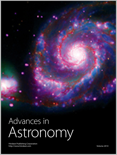
Advances in Astronomy
Unveiling the Mysteries of Space for All to Discover.Advances in Astronomy is a prestigious open-access journal published by HINDAWI LTD, dedicated to the field of astronomy and astrophysics. Established in 2008, the journal aims to disseminate significant research findings and advancements in the understanding of celestial phenomena, planetary sciences, and the intricate workings of the universe. With an impact factor that reflects its relevance in the scholarly community, Advances in Astronomy holds a commendable rank of Q3 in both Astronomy and Astrophysics as well as Space and Planetary Science categories, indicating its importance within these fields. The journal also showcases a commitment to open-access publishing, ensuring that research is readily available to both the scientific community and the public. Researchers, professionals, and students alike are encouraged to contribute to this dynamic forum to share knowledge and foster collaboration in exploring the wonders of the cosmos.

Particles
Innovating Physics: Where Particles Meet Possibilities.Particles is an esteemed open access journal published by MDPI, focusing on the dynamic fields of astronomy, astrophysics, and nuclear and high energy physics. Since its inception in 2019, the journal has made significant strides in contributing to scholarly discourse, achieving a commendable ranking in the Q2 category for its relevant fields as of 2023. With a commitment to disseminating high-quality research, it offers unrestricted access to a global audience, fostering collaboration and knowledge exchange among researchers, professionals, and students. Located in Basel, Switzerland, Particles serves as a platform for innovative research and discussions that leverage the latest advances in physics. Its current Scopus rankings underscore its impact and relevance, with notable positions in various categories within Physics and Astronomy. Through its rigorous peer-review process and diverse publication options, Particles continues to carve a niche in the academic landscape, catering to a growing community engaged in pioneering exploration of fundamental particles and cosmic phenomena.
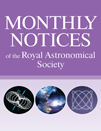
MONTHLY NOTICES OF THE ROYAL ASTRONOMICAL SOCIETY
Connecting Minds with the Wonders of the Universe.The MONTHLY NOTICES OF THE ROYAL ASTRONOMICAL SOCIETY (MNRAS), published by Oxford University Press, serves as a premier platform for the dissemination of significant research in the fields of Astronomy, Astrophysics, and Space and Planetary Science. Established in 1913 and with an impressive impact factor reflected in its 2023 Q1 rankings—13th in Earth and Planetary Sciences and 14th in Physics and Astronomy—this journal is renowned for its rigorous peer-reviewed articles, fostering advancements in our understanding of the universe. Researchers, professionals, and students alike benefit from its rich content, which spans a vast array of topics within its scope, from stellar dynamics to planetary formation. While the journal does not currently offer Open Access options, the scholarly contributions published herein are invaluable for pushing the boundaries of contemporary scientific inquiry and ensuring that the latest findings reach an engaged audience globally.
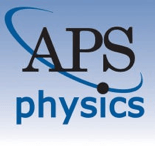
PHYSICAL REVIEW D
Leading the Charge in High-Energy DiscoveriesPHYSICAL REVIEW D, published by the American Physical Society, is a premier journal dedicated to the rapid dissemination of significant research findings in the fields of Nuclear and High Energy Physics as well as Physics and Astronomy. With an impressive Impact Factor and a prestigious Q1 ranking in 2023, it stands as one of the leading journals in its domain, with a Scopus ranking of #6 out of 87 in its category, placing it in the 93rd percentile. The journal welcomes rigorous theoretical and experimental studies that advance understandings in particle physics, cosmology, and quantum field theory. Although it does not provide open access, researchers gain a significant platform to reach a global audience and contribute to the ongoing discourse within the scientific community. Published regularly since its convergence starting in 1989, it remains essential for both emerging and established scholars looking to stay at the forefront of high-energy and nuclear physics research.